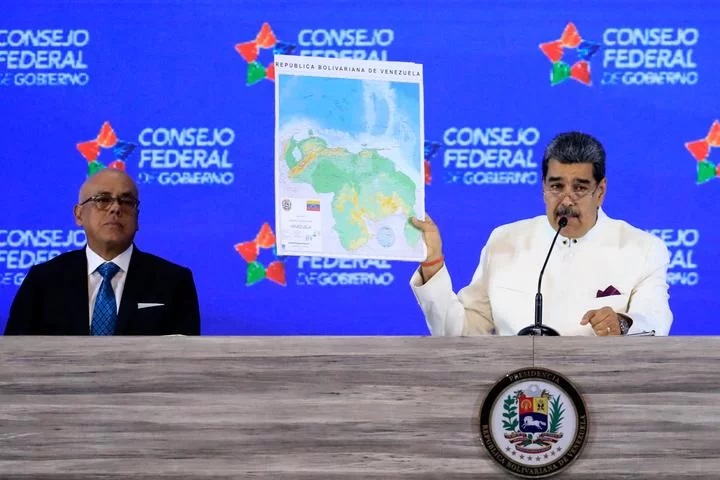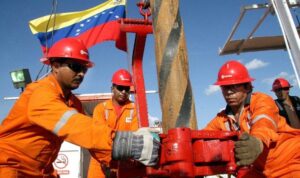
Published 12/06/2023 11:06 | Edited 12/06/2023 11:28
The President of Venezuela, Nicolás Maduro, proposed this Tuesday (5) the creation of a Venezuelan province in Essequibo, Guyana. On Sunday (3), the country’s population approved a referendum proposing the annexation of the territory.
In a session at the National Assembly, the president presented a bill that will regulate the creation of the State of Guyana Essequiba and allow the execution of the decisions approved by the referendum.
Currently, the area corresponds to 74% of Guyanese territory, claimed by Caracas. The Venezuelan president also ordered PDVSA, the Venezuelan state oil company, to grant licenses for oil and gas exploration in the region.
“Guyana must know that we will resolve this by hook or by crook, because it will be an organic law for all governments and future generations, all done in democracy, in peace, in freedom,” he said.
On Sunday, Venezuela held a referendum in which 95% of voters present voted for the country to incorporate Essequibo into the Venezuelan map.
Among the measures that Maduro proposed are:
- The beginning of the debate in the National Assembly and the approval of the Organic Law for the defense of Esequiba Guyana.
- The creation of a sector of the state company Petróleos de Venezuela (PDVSA) for Essequibo and the granting of licenses for prospecting for gas, oil and mining.
- A social assistance plan for the population of Guyana Esequiba, carrying out a census and issuing identity cards to the inhabitants.
- The creation of a High Commission for the Defense of Guyana Esequiba, a body made up of the Defense Council, the Federal Government Council, the National Security Council and the political, religious and academic sectors.
- The creation of an Integral Defense Zone for Guiana Esequiba.
- While the law is being discussed, Rodriguez Cabello will be the Guyana Esequiba authority, and also provisionally during the legislative discussion, the administrative headquarters of this authority will be in the city of Tumeremo, in the territory of Venezuela.
- The publication and dissemination of the new Map of Venezuela in schools, secondary schools and universities in the country
The president of Guyana, Irfaan Ali, informed this Wednesday (6) that he will contact the Security Council of the United Nations (UN). “The Guyana Defense Force is on high alert. Venezuela has clearly declared itself an outlaw nation,” said Irfaan Ali.
The announcement comes hours after Caracas announced what would be the “new map” of Venezuela, already including the territory of Essequibo. Recently, the International Court of Justice ruled that Venezuela cannot annex the region.
Since the end of the 19th century, it has been under Guyanese control. The region corresponds to approximately 70% of the country’s current territory and is home to around 125 thousand people.
Historical dispute
The area, rich in minerals and precious stones, has been under the control of Guyana since the country became independent in 1966. Before that, it was dominated by the United Kingdom, since the mid-19th century.
The British supported their claim to the territory on the basis that in 1648 the Spanish ceded the entire area east of the Orinoco to the Dutch. Part of this land was later passed by the Netherlands to the United Kingdom.
Venezuela, in turn, claims that the territory belongs to it, as it was part of the Spanish Empire, there was a presence of Spanish religious people in the area and, according to it, the Dutch never occupied the region west of the Essequibo River. The claim existed even before the country became independent, that is, when it was still part of Gran Colombia.
The region is known in Venezuela as Guyana Essequiba, or simply, Essequibo, and currently appears on the country’s official maps as “Zona en Reclamación”, that is, a territory that is being claimed.
Under Guyanese administration, Essequibo includes areas of six provinces, two of which are entirely located there and three have the majority of their surfaces located in the region claimed by Venezuela.
Furthermore, Essequibo includes an important portion of the Guyanese coast, where enormous oil reserves were discovered a few years ago and which Guyana is already exploring, in partnership with companies such as the North American ExxonMobil and the Chinese CNOOC.
Source: vermelho.org.br

